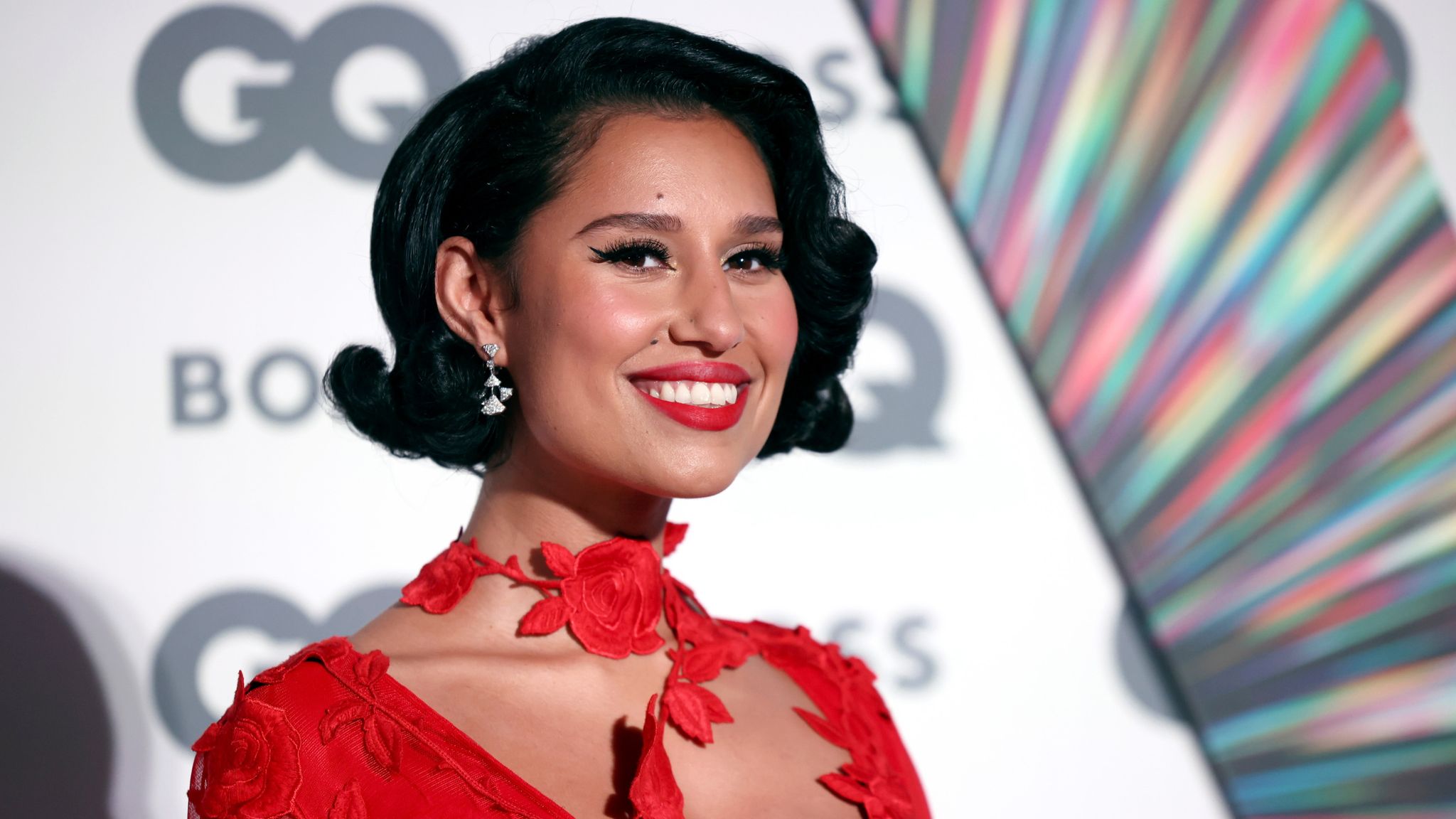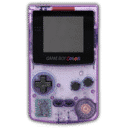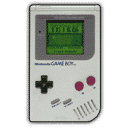
Summary:
Raye returns to Nintendo with a holiday TV ad that keeps the focus on people, music, and the small sparks of play that make time together feel special. The spot moves through a handful of quick scenes that tell a bigger story: a dressing room moment with Donkey Kong Bananza shared with a young fan, a breezy studio break where Mario Kart World comes alive through Game Chat + Camera, and a Christmas party that turns into a full-on round of Super Mario Party Jamboree – Nintendo Switch 2 Edition plus Jamboree TV. The soundtrack—Raye’s “Where Is My Husband!”—glides across those scenes with brass, swing, and a wink, giving every cut a pulse and a smile. What stands out isn’t just gameplay; it’s how easily the console weaves into daily life, showing the kind of moments people actually have: quick races between takes, a shared laugh before a show, and a living room packed with noise and friendly rivalry. If you’re planning holiday evenings or just want a warm blueprint for game nights, this campaign lays out a clear, human way to make it happen.
Raye returns to Nintendo with a music-fueled holiday spotlight
Raye’s latest team-up with Nintendo lands with the kind of energy that makes you want to pick up a controller right away. There’s no pretense, just scenes stitched together by everyday rhythms—work, rehearsal, parties—and the reminder that games are an easy bridge between people who might otherwise be on different schedules. The camera doesn’t linger; it drops you into snapshots: a backstage breather, a studio cooldown, a living room that’s one track away from a singalong. The ad plays like a highlight reel from a weekend you wish you had more often, and Raye is the thread that ties it all together with a performance that’s playful, grounded, and warm.

Why this collaboration works: music, personality, and approachable play
Pairing a chart-topping artist with a household gaming brand can feel flashy, but what makes this pairing work is how uncomplicated it is. Raye isn’t delivering a monologue; she’s simply inviting people in—fans, friends, and anyone within arm’s reach of a Joy-Con. The tone stays light because the play is light: quick matches, fast laughter, and zero barrier to entry. Music adds the spark, of course, but the real glue is personality. You see the artist people admire, then you see the person who’s up for a race, a minigame, or a goofy celebration. That balance sells not just a product, but a feeling you can actually recreate at home without effort.
Donkey Kong Bananza in the dressing room: a quick moment, big heart
The backstage dressing room cameo captures the purest version of what this ad celebrates: a short burst of fun that fits neatly between commitments. Raye and a young fan share a Donkey Kong Bananza session where the challenge is less about mastery and more about being present. You can almost hear the pre-show hum outside the door, yet the scene keeps its calm, letting the game set a gentler tempo before the big night. It’s the kind of moment that reminds you handheld play is built for these in-between spaces—five minutes here, ten minutes there—and those minutes count when they’re shared.
Mario Kart World with Game Chat + Camera: easy connection from the studio
The studio scene shows how quickly a quiet break flips into loud cheers with Mario Kart World. Game Chat + Camera turns an ordinary match into a conversation with faces, not just voices, which helps the banter hit harder and the reactions feel real. You don’t need a complicated setup to make it work; the feature is there to keep people visible, heard, and laughing when the blue shell lands. It’s a subtle nod to modern play, where social features fade into the background and the relationships take center stage, even when everyone’s on different couches across town.
Small design choices that make social gaming feel effortless
What truly sells the studio moment is how little friction there is between the idea to play and the act of playing. The UI makes voice and video feel like a natural extension of the match, not an add-on you need to configure. Starting a room, seeing who’s online, and jumping into a cup takes seconds. That fluidity matters when time is tight, and it’s why quick, spontaneous sessions become a habit rather than a plan. The ad doesn’t over-explain any of it—it just shows the flow and lets the laughter do the heavy lifting.
Super Mario Party Jamboree + Jamboree TV: holiday nights built for everyone
The Christmas party turns into a living room chorus of cheers once Super Mario Party Jamboree – Nintendo Switch 2 Edition hits the screen with Jamboree TV. You can feel the room expand as more players grab controllers, the way holiday nights do when someone suggests “one more round.” Minigames come fast, the rules stay friendly, and even the shy guests end up leaning forward. That sense of shared spectacle is the point: the TV becomes a stage, the room becomes an audience, and the party finds its rhythm. It’s gaming as an icebreaker, not homework.
Why party play still wins during the holidays
People crave activities that don’t require a briefing, and party games thrive because anyone can slide in mid-evening. The ad’s party sequence leans on that truth, using familiar characters and simple goals to keep every guest on equal footing. There’s room for bragging rights, but there’s also room for the person who just wants to mash buttons and laugh. It’s a reminder that the best holiday memories arrive when nobody is stuck on the sidelines waiting their turn.
The soundtrack: how “Where Is My Husband!” sets the tone
“Where Is My Husband!” gives the ad its heartbeat—bright horns, playful pacing, and a wink that pairs perfectly with punchy minigames and last-lap sprints. The song’s showmanship carries through every cut, turning even a loading moment into a toe-tap. It’s not just background; it’s the connective tissue that keeps the ad’s scenes moving in step. The result is a spot that feels like a performance in miniature, with Raye’s vocal swagger keeping spirits high from the first frame to the final smile.
Music as an invitation rather than a spotlight
Instead of stealing focus, the track gently hands it back to the people on screen. That’s the sweet spot for a music-led campaign: the song pumps energy into the scene, then gets out of the way so the chemistry can breathe. When you remember the ad later, you remember both the hook and the hug—the melody and the message that playing together is supposed to be easy, messy, and fun.
Small design choices that make social gaming shine
Little touches carry big weight: quick profile switching, clean on-screen prompts, and flexible play styles that make it painless to move from handheld to TV. Those details don’t headline an ad, but they make the experience feel inviting when the controller passes around the room. Short setup, clear feedback, and smooth transitions help everyone stay inside the moment they’re enjoying. The spot never lectures about features; it just shows how they clear the path between “should we play?” and “we’re already playing.”
Why frictionless play beats feature lists
Most of us don’t memorize specs; we remember how long it took to start the fun and how easily friends could join. That’s the quiet argument in these scenes: reduce friction, and people will build rituals around the games they love. The campaign demonstrates that in under a minute, nudging you toward routines that last well beyond the holidays.
Why Switch 2’s social features matter for families and friends
Between busy calendars and long commutes, syncing schedules is hard. Features that shrink distance—voice, camera, quick lobbies—turn separate evenings into shared ones. When a console makes it natural to wave, grin, and talk trash, it’s easier to keep bonds alive without a penciled-in plan. The ad treats those tools like a given, and in doing so, it reframes online sessions as something you can fit into the cracks of the day instead of an event that needs choreography.
Moments that scale from two players to a roomful
A hallmark of the scenes here is how easily they scale. Two players in a dressing room is enough. A studio crew during a late break is enough. A crowd in a living room is more than enough. The same console flexes to fit each context, and you don’t have to change your behavior to make it work. That consistency is why people stick with a system—it meets them where they are.
What this campaign signals for Nintendo’s creative direction
The concept is simple and confident: show short, real-life touchpoints that anyone can copy. By leaning on an artist known for command and charisma, Nintendo gets a voice that can carry scenes without exposition. The takeaway is calm and human: you already have the friends, the family, and the spaces; the system just threads them together. That approach points to a creative track that favors authenticity over spectacle, and it’s a path that tends to age well.
The power of repetition: familiar faces, fresh settings
Bringing Raye back builds recognition without feeling stale because the settings and games do the refreshing. New tracks, new party nights, same warmth. The continuity helps people remember last year’s feelings while giving them new reasons to gather. It’s less about surprise and more about rhythm—like a favorite chorus that lands every time.
Tips to recreate the ad’s best moments at home
Start small: a quick handheld session while waiting for friends to arrive, or a spontaneous two-lap race before dinner. Keep a couple of go-to party games installed, and don’t over-curate the room—snacks, a couch, a TV, and you’re set. Use voice and camera when people are apart to keep the energy high, and rotate hosts so everyone gets a turn to set the vibe. Most importantly, make it a habit. Short, repeatable rituals turn into traditions faster than you think.
Holiday night playbook: Mario Kart World into Jamboree TV
When the group is mixed—cousins, coworkers, someone’s neighbor—open with Mario Kart World to get everyone laughing, then move to Super Mario Party Jamboree for minigame chaos that welcomes newcomers. Keep rounds short and rotate controllers frequently so nobody sits out too long. The ad’s pacing is your template: quick scene, quick smile, keep going.
Accessibility and inclusivity: inviting more players to the party
Welcoming play isn’t just about game choice; it’s also about settings that help more people feel comfortable. Adjust controller layouts, enable on-screen guidance, and keep difficulty flexible so each guest can find a groove. Clear prompts and readable text reduce anxiety for first-timers, and letting players opt into voice or camera keeps participation on their terms. The ad’s friendliness works because the invitation is open, and the same holds for your living room.
Reading the room and sharing the spotlight
Party play shines when everyone gets a turn to celebrate. Call out small wins, switch teams often, and embrace silly moments. The warmth in the ad doesn’t come from perfect play; it comes from how people react to each other when the unexpected happens. If the goal is connection, the scoreboard is just a prop.
The broader trend: artists bridging music and play
Musicians bring ready-made communities, and when campaigns use that connection thoughtfully, everyone benefits. Fans see a favorite artist in familiar spaces, and the brand gets a voice that feels lived-in rather than scripted. The trick is making sure the music supports the story instead of swallowing it. Here, the track fuels the pacing, the artist fuels the charm, and the games fuel the laughter. That triangle is sturdy.
When a song becomes the memory
Ask anyone about an ad they loved, and they’ll often hum before they explain. A hook that pairs with shared activities sticks around—especially during the holidays when nostalgia runs high. By aligning a catchy single with scenes built for replay, this campaign plants a tune people will associate with their own nights of rivalry and reunion long after the tree comes down.
What to watch next: platforms, updates, and shared experiences
Campaigns like this usually arrive with fresh beats to follow—updates, events, or little surprises that keep players talking. Keep an eye on social channels and official pages for new clips, playlists, or themed nights that sync with end-of-year gatherings. The momentum here is social, and it thrives on repeatable moments: quick races, seasonal playlists, and a party game that always finds one more player.
After the holidays
When January hits, don’t shelve the controllers. Schedule a midweek match or a monthly minigame night, even if it’s just two people hopping online for twenty minutes. The ad’s message is simple—play fits into life, not the other way around—and the easiest way to honor it is to keep saying yes to small sessions whenever they naturally appear.
Keeping play at the center of every moment
If the spot had a thesis, it would be this: the best gaming memories are built from short, sincere moments shared with people you like. Raye’s presence and music add sparkle, but the real magic is how ordinary each scene is—no grand setup, no complicated plan, just a controller, a song, and the people you want to see smile. That’s a recipe that travels well from screen to sofa.
Conclusion
Raye’s new Nintendo Switch 2 advert lands because it’s honest about how we actually play: in spare minutes, during busy days, and with the people already in our orbit. The soundtrack keeps things buoyant, the scenes feel lived-in, and the games invite anyone to jump in. If you want a template for holiday evenings that don’t fizzle, start here—short sessions, wide invitations, and music that keeps the room buzzing. The rest takes care of itself.
FAQs
- Does the advert feature real gameplay?
- Yes, the scenes highlight quick, pick-up-and-play moments across titles like Mario Kart World, Donkey Kong Bananza, and Super Mario Party Jamboree – Nintendo Switch 2 Edition, reflecting how people commonly play together.
- What song is used in the advert?
- The backing track is Raye’s “Where Is My Husband!”, a lively, brass-driven single that matches the ad’s upbeat pacing and social energy.
- How does Game Chat + Camera change Mario Kart World?
- It adds face-to-face reactions and easy conversation to standard races, turning a quick cup into a shared hangout even when players aren’t in the same room.
- What’s the role of Jamboree TV in the party scene?
- Jamboree TV brings the room together around minigames that anyone can join, keeping rules simple and rounds fast so newcomers feel welcome right away.
- Can these play setups be recreated at home?
- Absolutely. Keep a party lineup installed, use quick-join social features for distant friends, and rotate controllers often to mirror the ad’s pace and keep the energy high.
Sources
- Brit award-winning singer Raye teams up again with Nintendo, My Nintendo News, November 3, 2025
- Nintendo UK: “Take a look at our new video featuring @raye”, Instagram (Nintendo UK), October 31, 2025
- Raye | My Nintendo Store, Nintendo UK Store, 2025
- WHERE IS MY HUSBAND! – RAYE, Official Charts, September 19, 2025
- Where Is My Husband!, Wikipedia, accessed November 4, 2025














